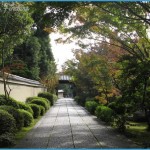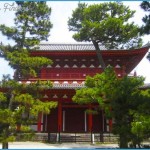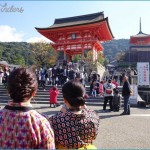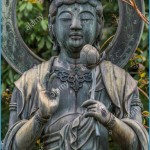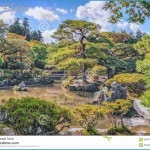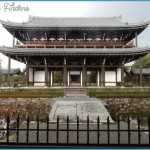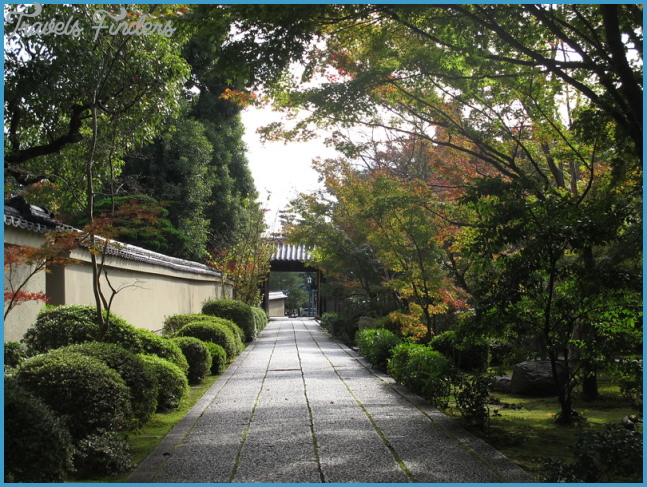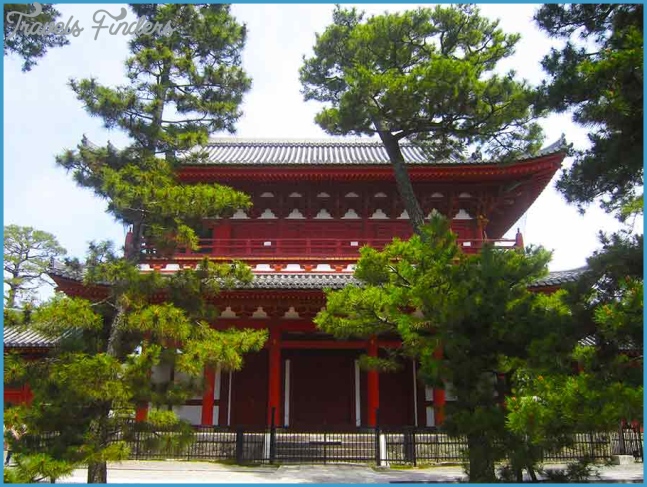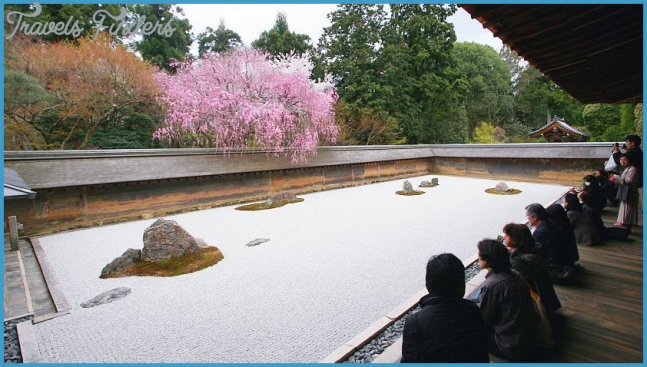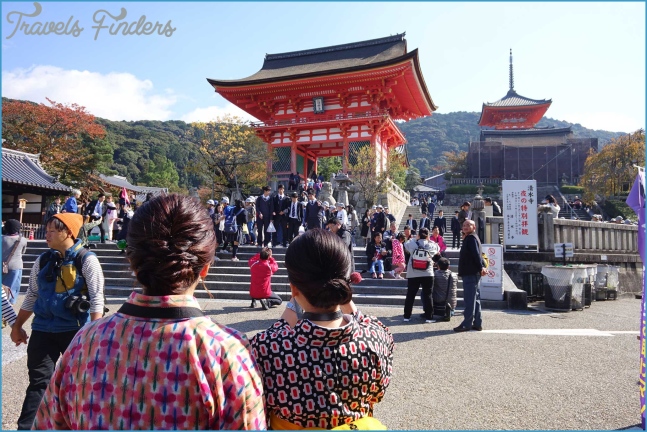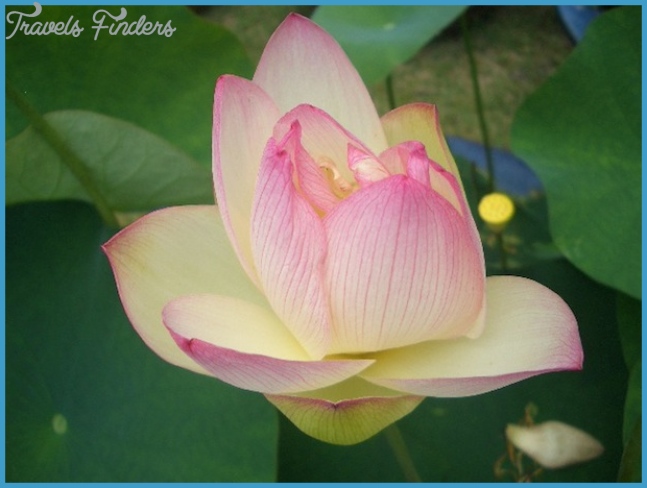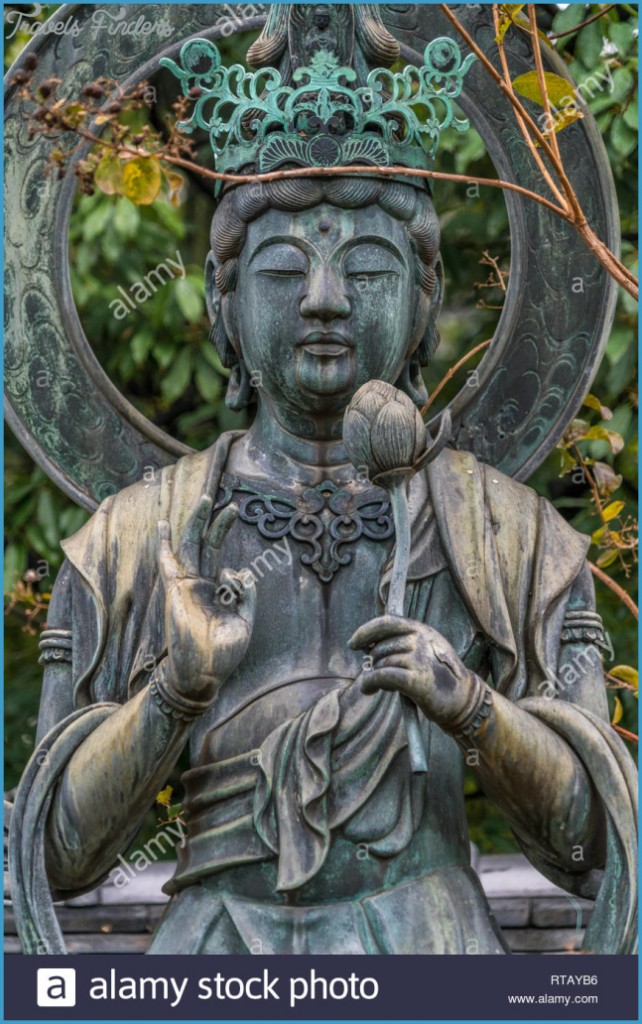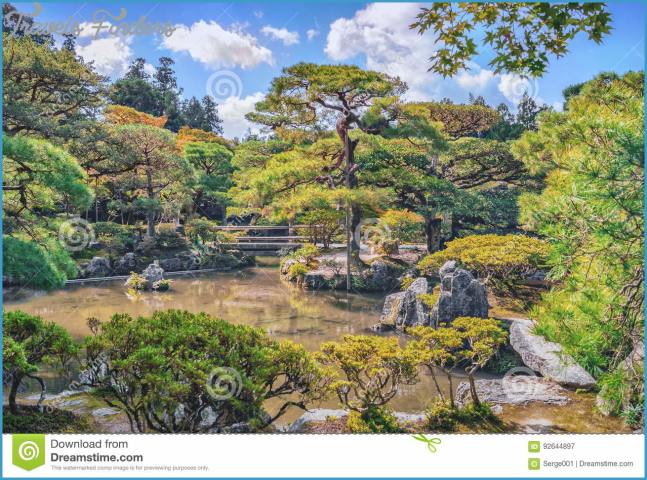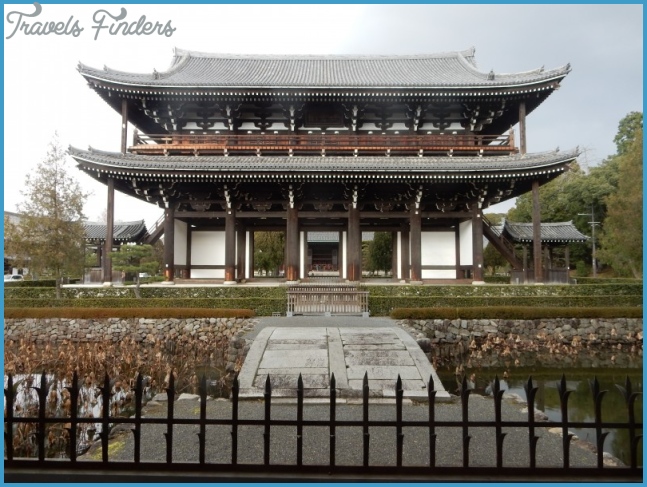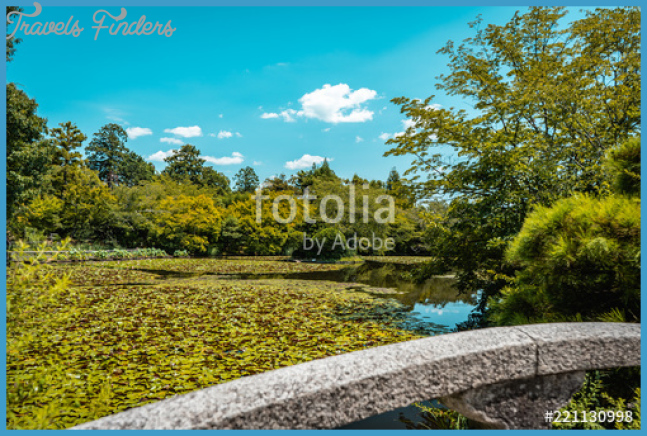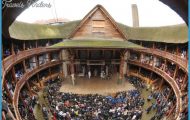One of Kyoto’s finest lotus gardens is found inside Hokongo-in Temple, located directly across Marutamachi Street in front of JR Hanazono Station. Honkongo-in was established as a Buddhist temple in 1130 on the grounds of an ancient villa. Its garden stretches up from a lotus pond to the sloping base of Narabi Hill, where cascading spring water was used to create the oldest artificial garden waterfall in Japan. The waterfall’s boulders now rely on water pumped from the garden’s pond, where dragonflies hover amidst the pink and white lotus blossoms, the delicate flowers a sacred Buddhist symbol of purity and spiritual awakening.
The Hanazono district is named for Emperor Hanazono, who abdicated in 1318, and upon becoming a monk donated his former palace grounds to establish Myoshin-ji, a Zen temple complex.
Kyoto Temples of Lotus and Zen Photo Gallery
Located just north from Hokongo-in’s lotus pond, Myoshin-ji’s 7 acres (3 ha) enclose numerous sub-temples whose Zen gardens spread around the classic south-to-north Zen temple layout: Sanmon Gate, Buddha Hall, Dharma Hall, and Abbot’s Hall. The temple’s winding stone lanes are flanked by high walls and graceful temple roofs that create a showcase of artistic kawara clay roof tiles, including onigawara demons, komainu lion-dogs, and imperial chrysanthemums. The narrow stone paths are used by Zen priests, busy acolytes, and neighborhood kids just taking a short cut.
A pink-red lotus, Nelumbo nucifera, in the Heian-era garden at Hokongo-in.
A young Zen monk at Taizo-in Temple.
A splendid onigawara demon tile at Myoshin-ji’s Buddha Hall.
The Seijo Taki at Honkongo-in is the oldest man-made garden waterfall in Japan.
The irori hearth and the nijiriguchi “crawling-in entrance” are traditional chashitsu elements in
the tearoom at Daiho-in Temple.
A black karasu raven perches on a kawara roof tile at Rinka-in Temple.
A stone weight and bamboo splint are used to shape a pine tree’s limb at Kingyu-in.
A specialist tateguya craftsman repairs a sliding door at Keshun-in.
Noren curtains at the entry gate of Daiho-in.

